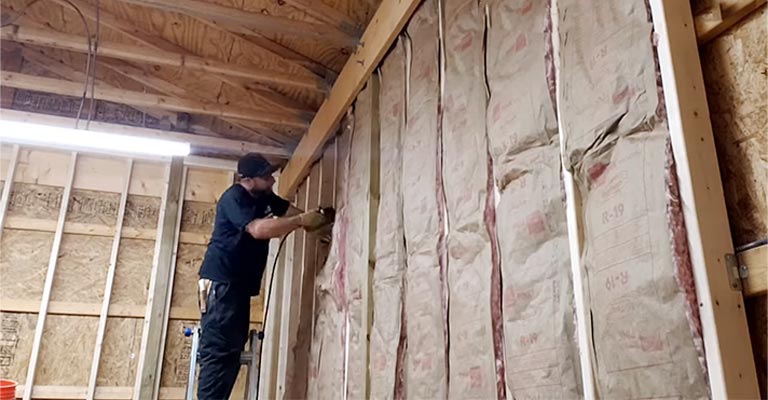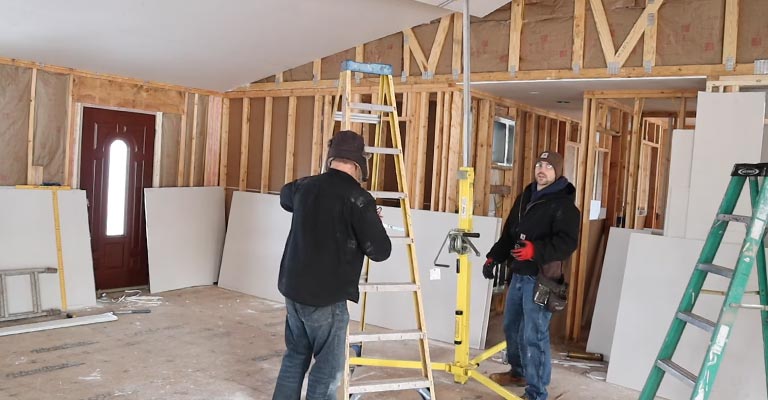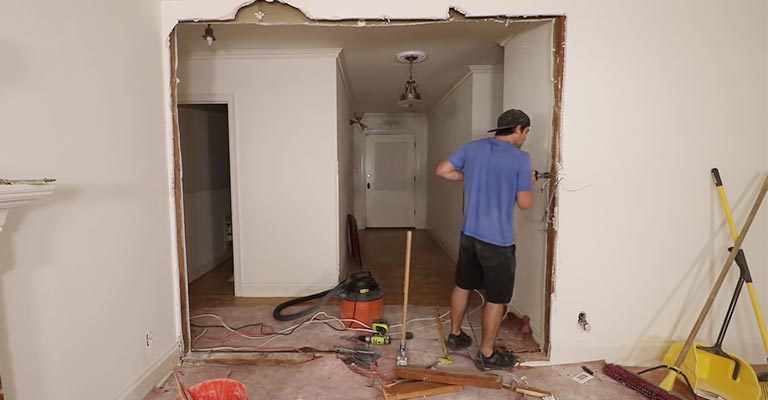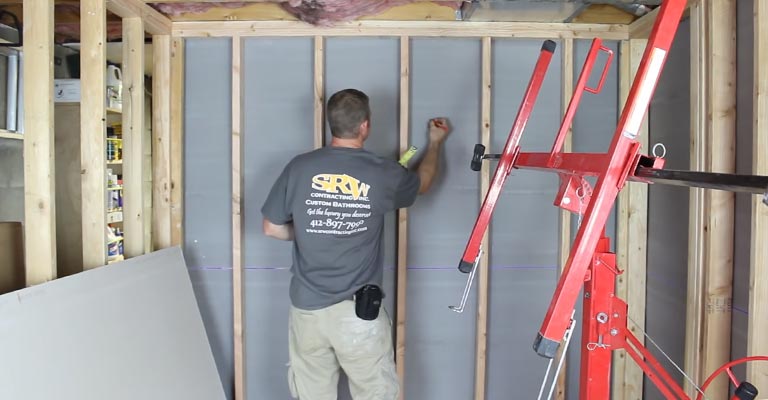The process of replacing drywall in your home might seem like a straightforward home improvement project, but like many renovations, it often involves regulatory considerations.
One common question homeowners have is whether they need a permit to replace drywall. Understanding the permitting requirements can help ensure that your home improvement project proceeds legally and without unexpected setbacks.
Is Permit Required For Replacing Drywall?
Unless plumbing or electrical devices or systems are altered, a building permit is not required for drywall or plaster repairs or replacements up to 1,000 square feet.
Should You Get A Permit To Replace Drywall?
It is generally required to obtain a permit for any electrical work performed behind the drywall. Adding an outlet is an example. While it makes sense to do it yourself, it might be illegal without a permit if you don’t have one.
DIYers who do basic wiring often get surprised by permit requirements imposed by strict municipalities. Oftentimes, homeowners still need permits to work on their homes even in states that permit it.
I don’t think you can blame the building department if you put yourself in their shoes. In the event of an electrical fire, everyone’s attention will be focused on them.
Understanding Building Permits
Building permits are legal documents issued by your local government or municipal authority that grant you permission to undertake construction or renovation projects.
The primary purpose of these permits is to ensure that the work complies with safety codes, zoning regulations, and other local laws.
Permits are typically required for major construction projects such as adding a new room, building a deck, or remodeling a kitchen.
Why You Might Need a Permit for Drywall Replacement

Permits are necessary for projects that might not seem as extensive, like replacing your home’s drywall. Here’s why.
Safety Concerns
While drywall replacement itself may not pose significant safety risks, other aspects of the project might.
For example, if you’re replacing drywall due to water damage, there could be underlying issues with electrical wiring, insulation, or structural damage that require inspection and correction.
Code Compliance
Building codes and regulations vary by location and can be quite detailed. They often stipulate the materials and methods that must be used in construction and renovation projects.
Even seemingly minor changes, like altering the thickness or type of drywall used, can impact a structure’s fire resistance or load-bearing capacity, making compliance with building codes crucial.
Impact on Other Systems
Drywall replacement projects can sometimes affect other building systems, such as HVAC (heating, ventilation, and air conditioning) or plumbing.
If you’re altering any of these systems in the process, a permit may be necessary to ensure they meet safety and code requirements.
Resale and Insurance
Failure to obtain necessary permits for renovations could have repercussions when it comes time to sell your home or make an insurance claim.
Buyers may request documentation of completed work, and insurance providers might deny claims if they discover unpermitted alterations.
When You Probably Don’t Need a Permit

In some cases, replacing drywall may be considered “minor work” that doesn’t require a permit. Here are scenarios where a permit is less likely to be necessary:
Cosmetic Repairs
If you’re only repairing or replacing a small section of drywall for cosmetic reasons, such as fixing a hole or crack, it may not trigger the need for a permit.
Exact Replacement
When you’re replacing drywall with the same type, thickness, and size as the existing material, it’s often considered a like-for-like repair and may not require a permit.
However, it’s essential to remember that the threshold for what constitutes a “minor” repair can vary from one jurisdiction to another.
Always check with your local building department to confirm whether your specific project requires a permit.
Common Building Projects Do Not Need A Permit
- Adding drywall to a detached garage without a habitable area.
- Repair of windows
- Equipment for residential playgrounds
- For small, non-fire-related drywall repairs within two sheets of drywall in residential spaces
- Replacement of residential appliances
- Replacement of plumbing fixtures
- Paintings/wallpapers
- Ceramic tile installation on floors and walls
- Repairing a heating unit
- Leaders and gutters
- Replacement of any interior, residential door within the individual unit
- Replace ceiling fan using existing outlet box and wiring
- Installation of carpets
- Replacement of air conditioning window units with existing electrical systems
- Repairing an air conditioner
Navigating the Permitting Process
If you determine that a permit is necessary for your drywall replacement project, here’s a step-by-step guide to help you navigate the permitting process:
Contact Your Local Building Department
Reach out to your local building department or permitting office to inquire about the specific requirements for obtaining a permit for drywall replacement. They can provide you with the necessary forms and information.
Submit Your Application
Fill out the permit application form, including details about the scope of work, materials to be used, and any contractors involved. Pay the required permit fee if applicable.
Plan Review

Depending on the complexity of your project, the building department may review your plans to ensure compliance with local codes and regulations. This step may involve inspections and corrections.
Permit Approval
Once your application is approved, you’ll receive the permit, which may need to be posted at the job site. Keep a copy of the permit on hand during the project.
Inspections
During and after the project, the building department may conduct inspections to ensure that the work is being done according to the approved plans and local codes.
Completion Certificate
After the final inspection, you’ll receive a completion certificate or final approval, indicating that the project meets all necessary requirements.
A Piece Of Advice
Most likely, your local government’s website will have an FAQ on when permits are required if you want to apply for one. Depending on your location, you may need a permit for repairs that include more than a 4×8 sheet of drywall.
In addition to increased costs, permits mean another building professional will be reviewing the work, which contractors don’t like.
Additionally, most areas require the person who obtains the permit to pay for any costs related to getting the work up to code.
Unless you’re sure your contractor isn’t taking advantage of this loophole, don’t let them have you obtain a permit if you need one.
Conclusion
In the world of home improvement, it’s always better to err on the side of caution when it comes to permits.
While replacing drywall may seem like a straightforward task, the need for a permit can vary widely depending on your location and the specifics of your project.
Failing to obtain the required permits can result in fines, difficulties during property transactions, and even safety hazards if underlying issues are left unaddressed.
To ensure a smooth and legal drywall replacement project, contact your local building department early in the planning process.
They can provide guidance on whether a permit is necessary and guide you through the permitting process if required.
Ultimately, adhering to local regulations and building codes will help you create a safer and more valuable living space while avoiding potential legal and financial headaches down the road.
Source:







